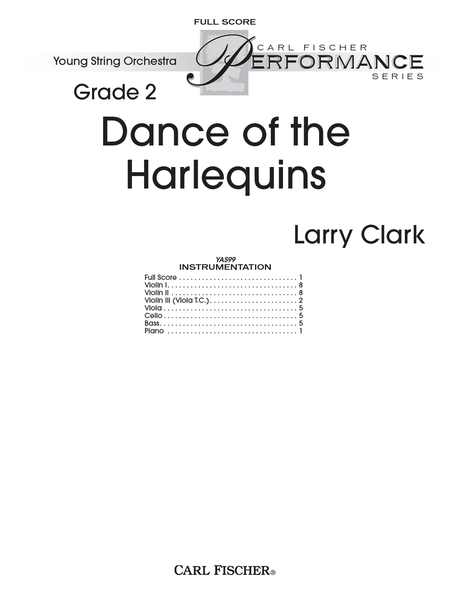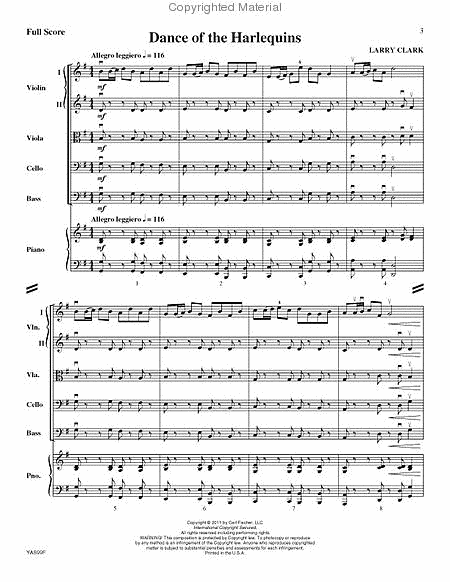Dance of the Harlequins
-
Ships in 1 to 2 weeks
Details
Description
SKU: CF.YAS99F
Composed by Larry Clark. FS SWS. Carl Fischer Young String Orchestra Series. Full score. With Standard notation. Duration 3 minutes, 25 seconds. Carl Fischer Music #YAS99F. Published by Carl Fischer Music (CF.YAS99F).ISBN 9780825884191. UPC: 798408084196. 8.5 x 11 inches.
Dance of the Harlequins is a lively work that uses the harmonic progression of the famous Pachelbel Canon as its foundation. Larry Clark uses this line as a jumping-off point to create an ingenuous work that shows the many moods of the Harlequin clown, from joyous to melodramatic.
When I started to write this piece I came up with the main melody first, then I harmonized it. In the process of doing that I realized that I was composing a new piece that was based on the harmonic progression found in the famous Canon by Johann Pachelbel. At first this sort of worried me, but then by doing a little research on the famous canon, I realized I was far from alone. There is even an incredibly funny YouTube video called “Pachelbel Rant” where comedian Rob Paravonian points out many of the usages of the chord progression from Pachelbel’s Canon found in many popular/rock songs. Watch it if you get a chance it is very funny! So, I decided to forge ahead and complete the piece.After the main theme begins without introduction that includes short punctuations of the harmony in the lower strings, the main theme is repeated with a countermelody playedby the violas. The cellos then take up a new B theme with the countermelody to this section covered by the first violins. The main theme with counter melody is stated one more time before it is followed by a transition to a more lyrical and augmented theme that is first presented in the violas. This theme repeats now with the melody in the first violins and a countermelody added in the violas. One more statement of the lyrical section theme is presented, but now the celli state the original main theme in augmentation along with the lyrical theme and countermelody. This is followed by an extended transition that leads back tot the B section theme now presented in the violins. After an extended cadence and build, the main theme returns one last time followed by a lively coda to complete the piece.There is something about the use of this famous chord progression that just makes it feel so right. I hope that I did justice to it and provided you and your students with a musical vehicle that will be enjoyable and at the same time educational.It has been my pleasure to have the opportunity to write this piece. I hope you and your students enjoy it and find it useful for your program.—LARRY CLARKLakeland, FL 2011.
About Carl Fischer Young String Orchestra Series
This series of Grade 2/Grade 2.5 pieces is designed for second and third year ensembles. The pieces in this series are characterized by:
--Occasionally extending to third position
--Keys carefully considered for appropriate difficulty
--Addition of separate 2nd violin and viola parts
--Viola T.C. part included
--Increase in independence of parts over beginning levels


 Share
Share